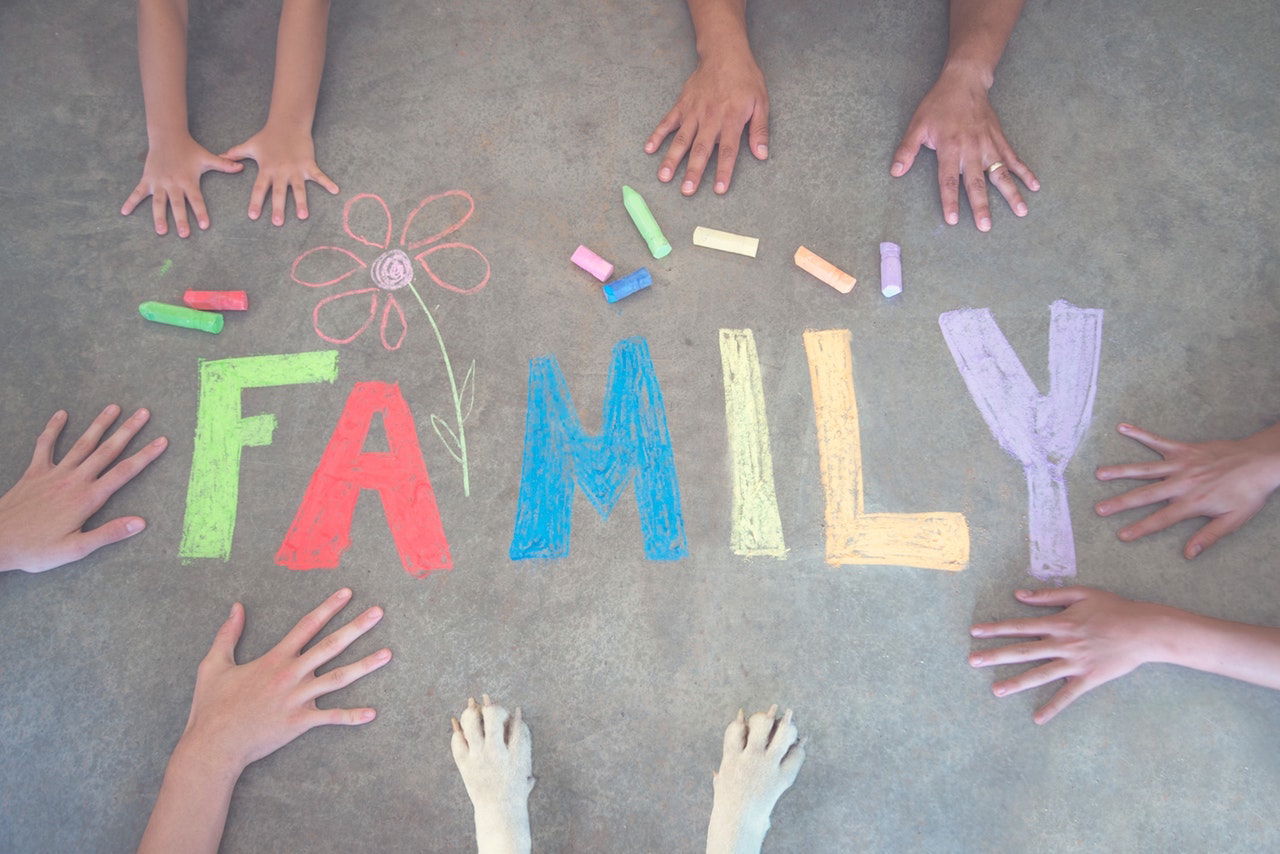Highlights
As a child, I loved visiting my grandparents’ turn of the century wood-framed house; it was perched on a hill, overlooking a broad tree-lined boulevard. Its massive front porches spanned the width of the house and claimed both the first and second floors of the four-story structure. Inside the house was an enchanting maze of rooms that opened from a Scarlett O’Hara-type foyer and its accompanying grand staircase. Each room, full of nooks and crannies (and a number of secret stairwells), worked its own distinct magic, but the room that captured my attention the most was the parlor. There, before a foreboding fireplace, sinking low into a stuffed velveteen sofa, I’d pour over the leather-bound album that contained images of my mother and father on their wedding day many years before.
My parents married after World War II. The black and white photos showed my radiant mother in a high-necked satin gown, a hat balanced precariously on her head, and my distinguished father, already balding, dressed in a finely tailored suit. The meaning of the wedding itself was far beyond my childhood comprehension; however, from those stolen moments in the parlor, I gleaned bits and pieces of a love story that influenced my actions even then, if not for a lifetime.
My mother hadn’t been a young bride, marrying close to age 30. She’d bucked her era’s age-to-marry-trend by a good seven years. While I knew, even as a young girl, that I wanted to marry one day, I didn’t think too much about it, nor was I in a hurry to marry when most of my contemporaries waltzed down the aisle. Like my mother, I expected to marry around age 30. That reference became part of my “marriage imprint”—one of the many factors that shaped my beliefs and expectations for my own love story later in life.
Each of us has a marriage imprint based upon the marriage of our parents. My marriage imprint, of course, went beyond what I’d learned from the photos in the parlor, to include the daily interactions I witnessed between my parents in our home growing up. Those exchanges—some intentional and others inadvertent—became my blueprint for intimacy.
Dr. Judith P. Siegel documents that by the time children leave home at the age of 18, they recognize marriage as “good” or “bad” and have determined if marriage is something that they want for themselves, based on what they’ve witnessed (or not witnessed) in their parents’ relationship. If they marry (which most of them eventually will), they already anticipate whether or not they will have a good marriage.
“I have come to appreciate,” Dr. Siegel writes in her book, What Children Learn From Their Parents’ Marriage, “that lessons of love are very powerful. The marital relationship observed by the child acts like a blueprint upon which all future intimate relationships will be built.”
We as parents could do a better job modeling the imprint from which our children base their own love stories.
This marriage imprint, formed from a very early age, wires a child with experiences from the parents’ relationship. An indelible impression, it shapes a child’s personality and identity, influences their relationship choices and lifetime experiences and does more to affect a child’s long-term wellbeing than any one single factor. Whether married or divorced, single or parenting together, the relationship shared between parents is observed, interpreted and assimilated into the lives of children.
Unfortunately, we as parents could do a better job modeling the imprint from which our children base their own love stories. Children today grow up in a variety of living arrangements that lend a less than ideal image of the institution of marriage—family arrangements that don’t always provide the rules and guidelines necessary for crafting successful long-term unions.
Data describing the living arrangements of children varies by definition and source. For example, Pew Research reported that in 2013, fewer than half of children under the age of 18 live in a home with both heterosexual parents who are in their first marriage. The U.S. Census Bureau, however, reported that in 2014, the bulk (58 percent) of children were growing up with both a biological mother and father present in the home. Even so, a large percentage of children are not growing up with their own married parents. For example:
- 36 percent of children live with a variation of one biological parent, step-parent, or live-in partner.
- Half are expected to witness the divorce of parents before the age of 18.
- Over one-third of children will "see their parents marry, remarry, separate, or start or end a cohabiting union" by the time they enter fourth grade.
- Half will have at least one set of grandparents who have divorced.
- And many children will not have witnessed marriage at all: 34 percent grow up in single-parent homes, most often with a mother who has never married.
Two decades ago, a renowned scholar of family studies, Urie Bronfenbrenner, referred to the “progressive disarray and accelerating disorganization of the family” that occurred in our western world since my parents married.
Looking at these troubling statistics, we shouldn’t be surprised when children lament, “Mom and dad could do better when it comes to marriage.”
Still, young people continue to hold marriage in high esteem: about 80 percent of young adults report marriage is an important part of their life plans. And, as author Joshua Kennon has noted, the wedding band remains a “symbol of first-class citizenship,” a “marker of success,” and the proverbial “gold-standard” for many couples when considering family relationships.
The point is this: parental relationships count. Decisions we make as mothers and fathers on behalf of our family help determine the course for each individual family member, and collectively have a broad ripple effect that influences public, social, and cultural issues. Until we as parents provide an imprint for intimacy from which our children can draw inspiration for relationship success, I fear we will see more children avoid marriage or end it prematurely, and consequently fuel the rise in single-parent homes known to challenge children individually and alter a society.
Based on what I’d observed in my parents’ home growing up, I was confident I could get married and raise a family, not just for a decade or two, but for a lifetime.
Did my parents have a perfect marriage? Perhaps not, but in my mind, they did—as well as in the minds of my sister and brother, who also observed the matrix of marriage that become the storyline for all three of our love stories later in life.
Somehow the generation before me (my parents) and the generation before them (my grandparents)—sporting a low divorce rate and almost unheard of rates of cohabitation and single-parenthood—modeled marriage as a unique partnership with inherent privileges, responsibilities, meaning, and purpose. Marriage was viewed as a channel for self-development, self-respect, pride, and integrity.
No wonder I wanted to be that bride I saw in the leather-bound album at my grandparents’ house! I wanted to be the smiling wife that not only stuffed the wedding cake into her husband’s mouth on their wedding day, but that also shared lovingly in the labor, stress, and joy of raising a family and running a household together. Based on what I’d observed in my parents’ home growing up, I was confident I could get married and raise a family—not just for a decade or two—but for a lifetime, creating for my own children a set of experiences that when crafted together, not only became a life worth living but also their imprint for intimacy.
Rhonda Kruse Nordin, a Senior Fellow at the Center of the American Experiment, is a Twin Cities author, educator, and public speaker whose research-based offerings provide point-of-view trends and recommendations to strengthen families.











